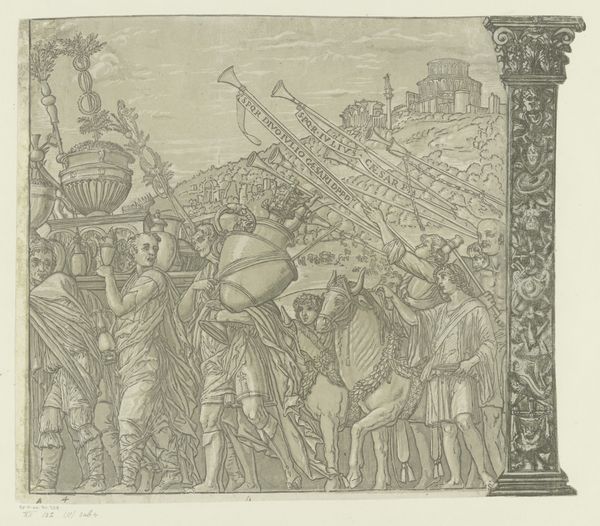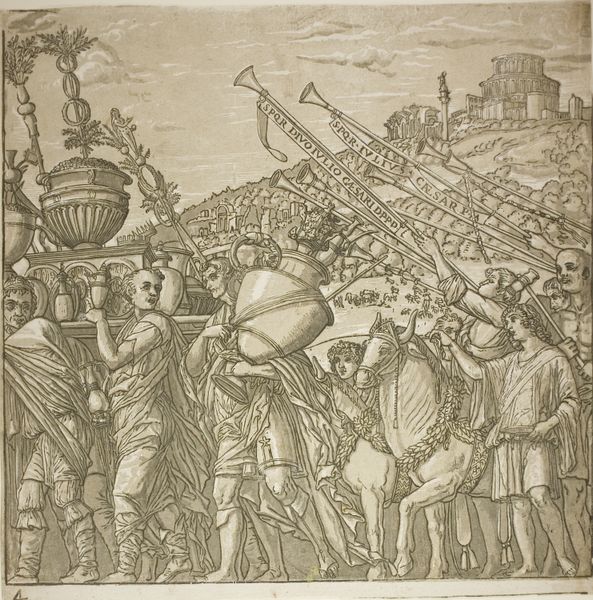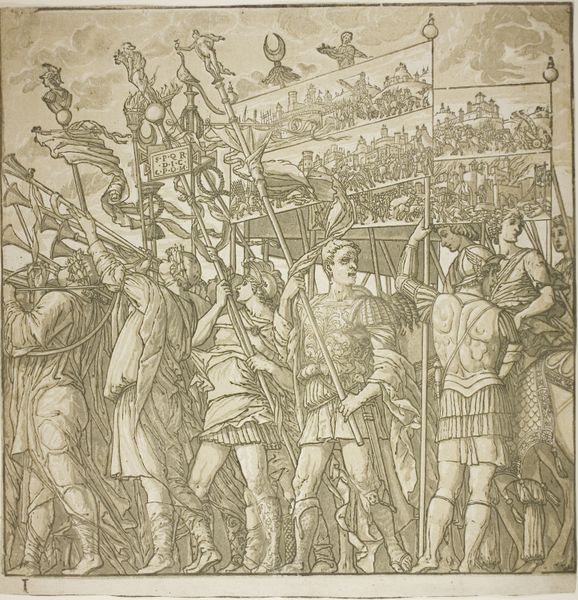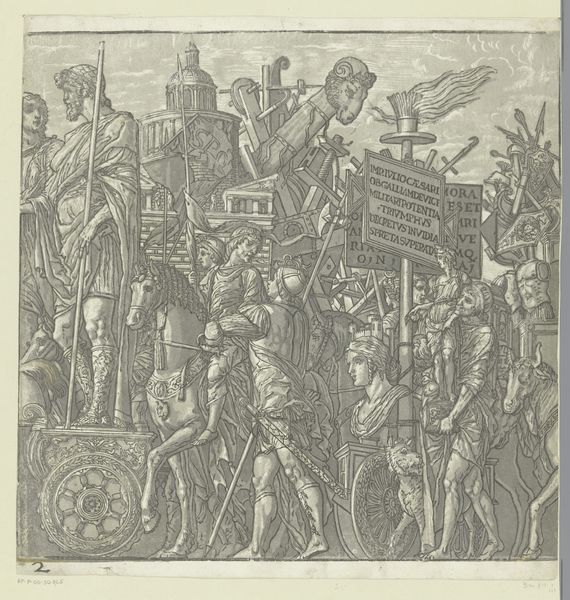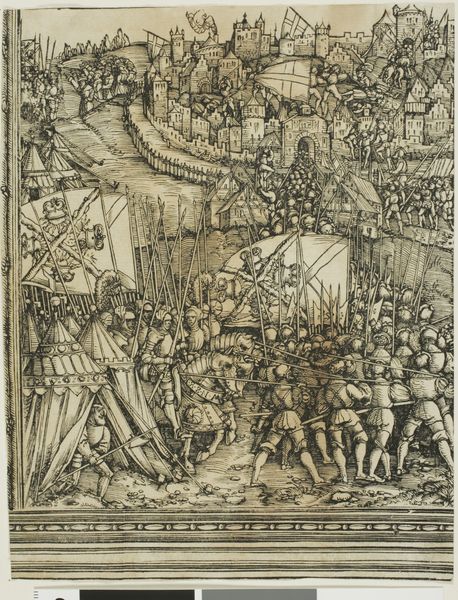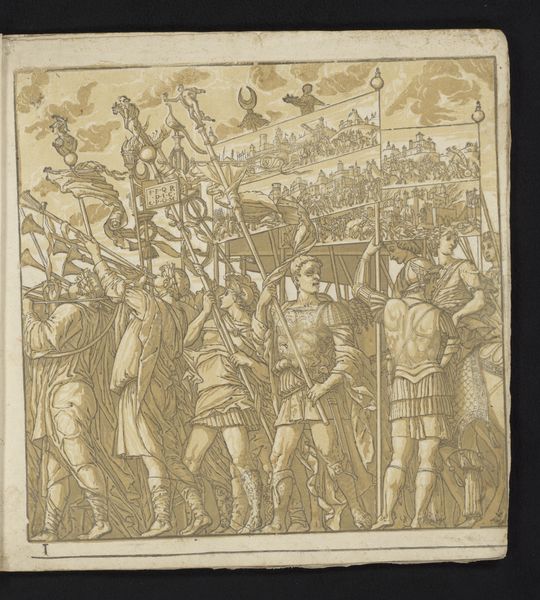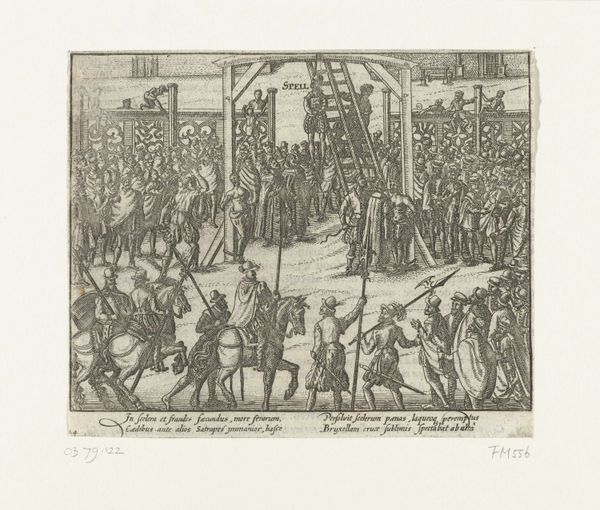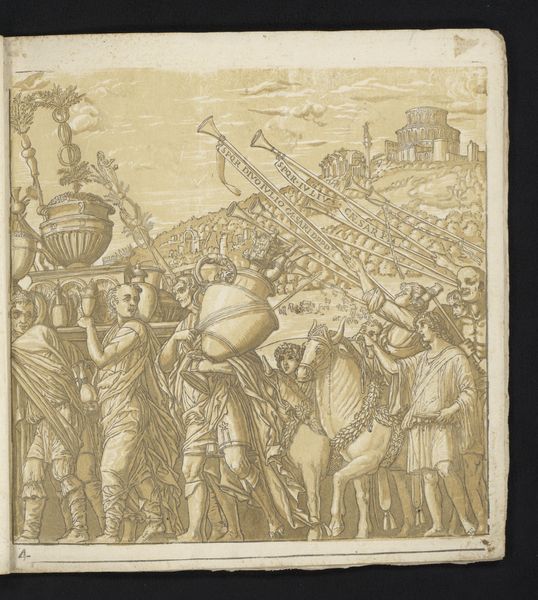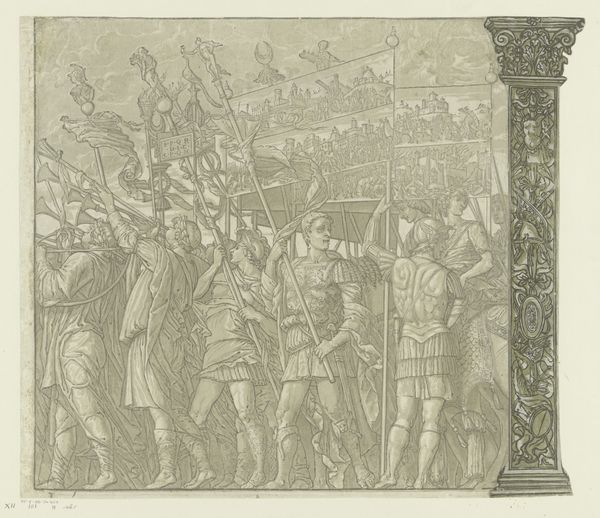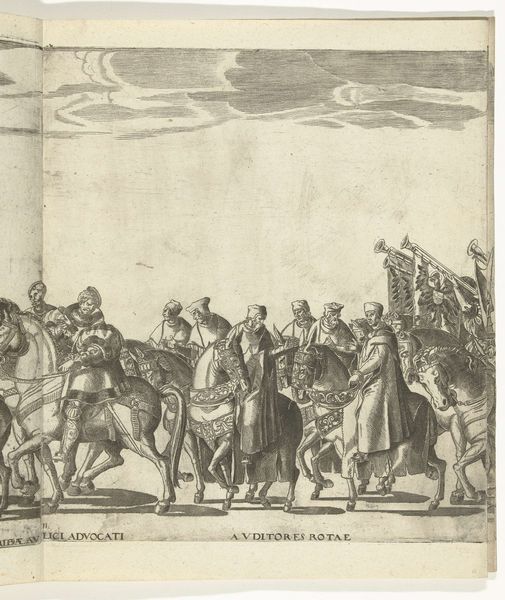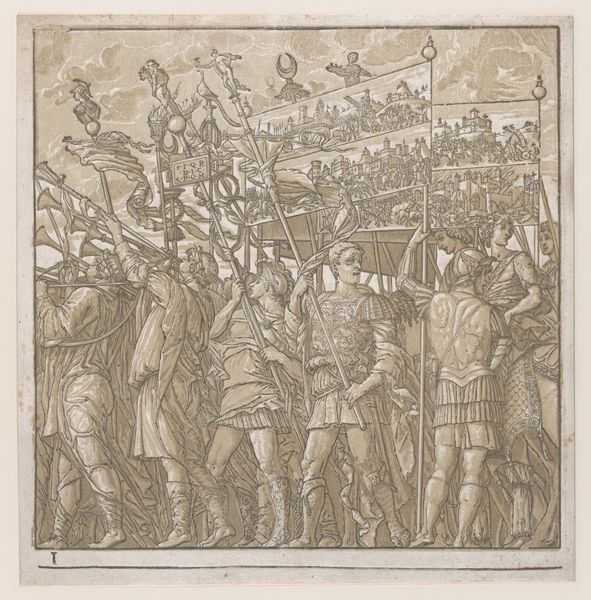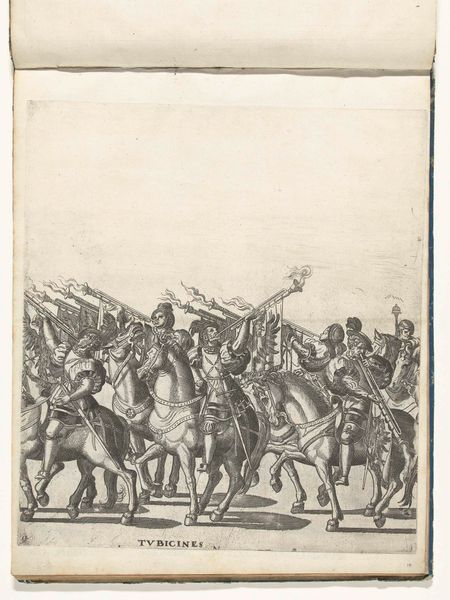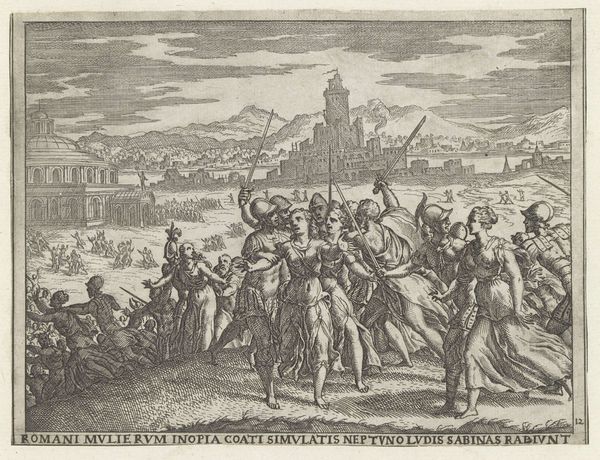
print, engraving
#
narrative-art
# print
#
old engraving style
#
classical-realism
#
figuration
#
11_renaissance
#
history-painting
#
italian-renaissance
#
engraving
Dimensions: height 387 mm, width 390 mm
Copyright: Rijks Museum: Open Domain
Andrea Andreani's woodcut print captures a triumphant procession, likely made in the late 16th or early 17th century. Dominating the scene are the standards and symbols of Roman power. Banners bearing the letters SPQR—*Senatus Populusque Romanus*, the Senate and People of Rome—proclaim the authority of the Roman state, harking back to the zenith of its imperial power. This motif of the triumphal procession, laden with spoils and symbols of victory, transcends time. We see echoes of it in Renaissance paintings, medieval tapestries, and even contemporary political rallies, all of which borrow from the visual language of Roman triumph. Consider the evolution of the eagle, a symbol of Roman might, which reappears in countless iterations across centuries and cultures. These symbols tap into a deep, collective memory, evoking feelings of power, pride, and dominance. The emotional resonance of such imagery is potent. The human psyche is drawn to symbols of authority and success, engaging viewers on a subconscious level. This symbolic language continues to resurface and evolve, shaping how we perceive power and authority, demonstrating the cyclical nature of history.
Comments
No comments
Be the first to comment and join the conversation on the ultimate creative platform.
